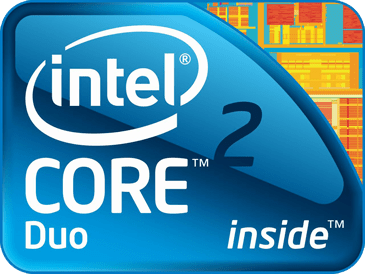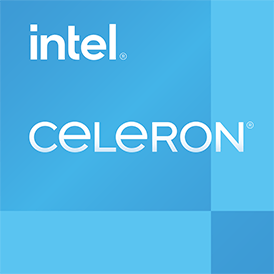
Compara Intel Celeron N4000 VS Intel Core 2 Quad Q9300. Which processor delivers superior performance?
In this detailed comparison, we evaluate the specifications and benchmarks of both processors to determine the best choice for your needs. We analyze their core counts, maximum frequencies, and power consumption.
Intel Celeron N4000 boasts a maximum frequency of 1.10 GHz GHz. 2 cores that enhance multitasking capabilities.With a power consumption of 6 W W, it ensures efficient performance.Publicado en Q4/2017, it incorporates the latest technology for optimal efficiency.
Intel Core 2 Quad Q9300 features a maximum frequency of 2.50 GHz GHz. 4 cores designed for high-performance tasks.Its power consumption is 95 W W, providing a balance of power and efficiency.Launched in Q1/2008, it is built to handle demanding applications.
 Razones a tener en cuenta
Razones a tener en cuenta Lugar en la clasificación general
(basado en varios puntos de referencia)
Mayor velocidad de reloj turbo
En 4% mejor velocidad de reloj en overclocking
Rendimiento por vatio
menos calor generado por el procesador, W.
Posiciones comunes Intel Celeron N4000 CPU en pruebas de referencia populares, para comparar con otros modelos.
 Razones a tener en cuenta
Razones a tener en cuenta Lugar en la clasificación general
(basado en varios puntos de referencia)
Mayor velocidad de reloj
En 56% mejor velocidad de reloj
Más número de núcleos
About 2 Más núcleos
Posiciones comunes Intel Core 2 Quad Q9300 CPU en pruebas de referencia populares, para comparar con otros modelos.
 Intel Celeron N4000
Intel Celeron N4000

Comprehensive background on the processors being compared, detailing their series, generation, and targeted market segment.
Essential parameters including the number of cores, threads, base and turbo frequencies, and cache size. These metrics provide insight into the processor’s speed—higher values generally indicate better performance.
The integrated graphics (iGPU) do not influence the CPU performance significantly; they serve as a substitute for a dedicated graphics card in the absence of one or are utilized in mobile devices.
This section details the built-in codecs used for encoding and decoding media content, which significantly enhance processing speed and efficiency.
Overview of the types and quantities of RAM supported by Intel Core 2 Quad Q9300 y Intel Celeron N4000. The supported memory frequencies may vary depending on the motherboard configuration.
Analyze the TDP (Thermal Design Power) requirements of Intel Celeron N4000 y Intel Core 2 Quad Q9300 to make an informed decision on the appropriate cooling system. Remember that TDP refers to thermal watts, not electrical watts.
Information on architecture, interfaces, and additional instructions supported by Intel Celeron N4000 y Intel Core 2 Quad Q9300, including virtual machine technologies and fabrication processes.
By analyzing the results from various benchmarks, you can gain a clearer understanding of the performance differences between Intel Celeron N4000 y Intel Core 2 Quad Q9300.
Compare the synthetic benchmark scores and make an informed decision on the best processor for your needs!